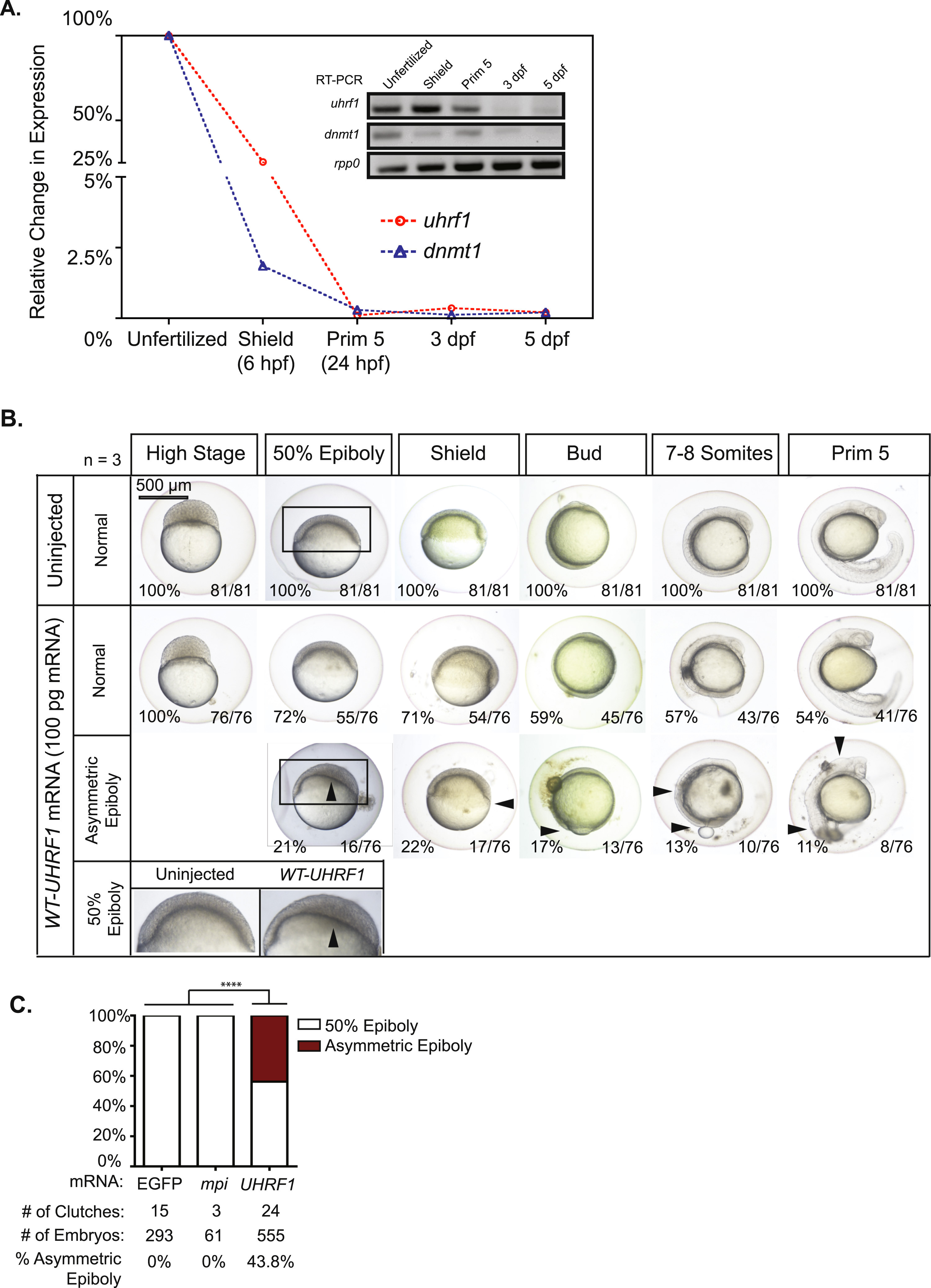Fig. 1
Distinct gastrulation defects in UHRF1 overexpressing embryos during early zebrafish embryogenesis. (A) Endogenous uhrf1 and dnmt1 are maternally provided. RT-qPC and RT-PCR (inset, gel electrophoresis) display the relative transcript levels of uhrf1 in unfertilized eggs, shield stage embryos (6 hpf), prim-5 stage embryos (24 hpf), 3 dpf larvae, and 5 dpf larvae. (B) Progression of embryonic development in uninjected wild-type embryos and UHRF1 overexpressing embryos at each indicated stage. At high stage (3.3 hpf) all embryos appear normal and at 50% epiboly (~5.25 hpf) and shield stage (6.0 hpf), arrows indicate asymmetric epiboly and delay in dorsal organizer formation. At bud stage (10.0 hpf), arrows indicate failure to complete epiboly and premature development of emerging tail bud and at 7-8-Somites stage (~12.0 hpf) arrows depict a delay in somite formation, pinched off yolk and, in some cases, a lack of a developing tail. At Prim-5 stage (24.0 hpf) arrows indicate morphological defects such as under-developed eyes and head, and defects in tail extension. Scale bar=500 µm. (C) The percent of embryos displaying asymmetric epiboly at 6 hpf in those injected with control RNA (EGFP and mpi) and WT-UHRF1. Significance of the percentage of the asymmetric epiboly was determined by Fisher′s exact test. Asterisks (*) indicate p<0.0001. The number of embryos and number of clutches for each condition is indicated.
Reprinted from Developmental Biology, 412(1), Kent, B., Magnani, E., Walsh, M.J., Sadler, K.C., UHRF1 regulation of Dnmt1 is required for pre-gastrula zebrafish development, 99-113, Copyright (2016) with permission from Elsevier. Full text @ Dev. Biol.

